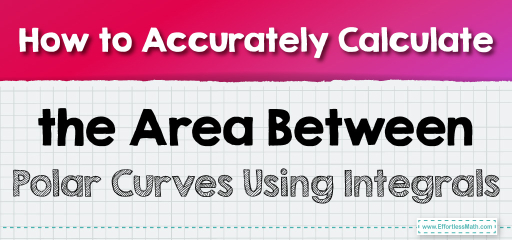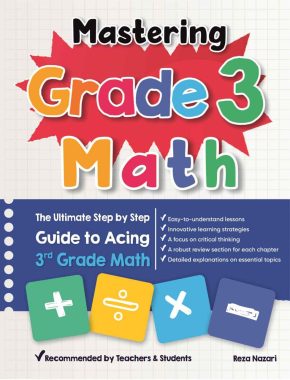How to Accurately Calculate the Area Between Polar Curves Using Integrals
To find the area between polar curves, identify the region bounded by two curves, \( r = f(\theta) \) and \( r = g(\theta) \), over an interval \([ \alpha, \beta ]\). The area between these curves is calculated by integrating the difference in their radial values squared:
[include_netrun_products_block from-products="product/6-south-carolina-sc-ready-grade-3-math-practice-tests/" product-list-class="bundle-products float-left" product-item-class="float-left" product-item-image-container-class="p-0 float-left" product-item-image-container-size="col-2" product-item-image-container-custom-style="" product-item-container-size="" product-item-add-to-cart-class="btn-accent btn-purchase-ajax" product-item-button-custom-url="{{url}}/?ajax-add-to-cart={{id}}" product-item-button-custom-url-if-not-salable="{{productUrl}} product-item-container-class="" product-item-element-order="image,title,purchase,price" product-item-title-size="" product-item-title-wrapper-size="col-10" product-item-title-tag="h3" product-item-title-class="mt-0" product-item-title-wrapper-class="float-left pr-0" product-item-price-size="" product-item-purchase-size="" product-item-purchase-wrapper-size="" product-item-price-wrapper-class="pr-0 float-left" product-item-price-wrapper-size="col-10" product-item-read-more-text="" product-item-add-to-cart-text="" product-item-add-to-cart-custom-attribute="title='Purchase this book with single click'" product-item-thumbnail-size="290-380" show-details="false" show-excerpt="false" paginate="false" lazy-load="true"] [include_netrun_products_block from-products="product/6-south-carolina-sc-ready-grade-3-math-practice-tests/" product-list-class="bundle-products float-left" product-item-class="float-left" product-item-image-container-class="p-0 float-left" product-item-image-container-size="col-2" product-item-image-container-custom-style="" product-item-container-size="" product-item-add-to-cart-class="btn-accent btn-purchase-ajax" product-item-button-custom-url="{{url}}/?ajax-add-to-cart={{id}}" product-item-button-custom-url-if-not-salable="{{productUrl}} product-item-container-class="" product-item-element-order="image,title,purchase,price" product-item-title-size="" product-item-title-wrapper-size="col-10" product-item-title-tag="h3" product-item-title-class="mt-0" product-item-title-wrapper-class="float-left pr-0" product-item-price-size="" product-item-purchase-size="" product-item-purchase-wrapper-size="" product-item-price-wrapper-class="pr-0 float-left" product-item-price-wrapper-size="col-10" product-item-read-more-text="" product-item-add-to-cart-text="" product-item-add-to-cart-custom-attribute="title='Purchase this book with single click'" product-item-thumbnail-size="290-380" show-details="false" show-excerpt="false" paginate="false" lazy-load="true"]\([
\text{Area} = \frac{1}{2} \int_{\alpha}^{\beta} \left( f(\theta)^2 – g(\theta)^2 \right) \, d\theta
]\)
This approach works because polar area elements differ from Cartesian ones. By subtracting the inner curve’s area from the outer curve’s, this integral accurately captures the space between them, often used in fields like physics for calculating bounded regions in circular motion or other fields.

To find the area between two polar curves, \( r = f(\theta) \) and \( r = g(\theta) \), start by understanding the shape and range of each curve over a given interval. The area between them can be calculated by using the formula:
\( [
\text{Area} = \frac{1}{2} \int_{\alpha}^{\beta} \left( f(\theta)^2 – g(\theta)^2 \right) \, d\theta
] \)
Here’s how it works: \( f(\theta) \) represents the outer curve and \( g(\theta) \) the inner curve. When you square each function’s radius and subtract the inner from the outer, it captures the difference in area. Integrating this difference over the interval \([ \alpha, \beta ]\) accounts for the complete bounded area between curves.
This technique is useful in fields like physics and engineering, especially when calculating areas within circular fields or in motion analysis involving radial boundaries.
Consider two polar curves, \( r = 3 + \cos(\theta) \) and \( r = 1 \), over the interval \( \theta = 0 \) to \( \theta = \pi \). To find the area between these curves, use:
\([
\text{Area} = \frac{1}{2} \int_{0}^{\pi} \left( (3 + \cos(\theta))^2 – 1^2 \right) \, d\theta
]\)
Expanding and integrating each term gives the total area between the curves. This process efficiently captures the space enclosed by the curves over the specified interval.
Frequently Asked Questions
How do you calculate the area of a circle?
To calculate the area of a circle, you use the formula \( A = \pi r^2 \), where \( r \) is the radius of the circle. This formula arises from the integral calculus concept of summing infinitesimally small circular rings from the center of the circle to its outer edge. Similarly, when finding the area between polar curves, such as in the post about calculating areas between polar curves using integrals, you integrate the squared difference between two radius functions over a given angle range. If you’re looking to inspire young minds in understanding such fundamental mathematical concepts, consider exploring resources like Top 10 Grade 3 Math Books Inspiring Young Mathematicians To Explore.
What is the difference between area and perimeter?
The difference between area and perimeter is fundamental in mathematics. Area refers to the amount of space enclosed within a shape and is measured in square units (like square meters or square feet). Perimeter, on the other hand, measures the length of the boundary of a shape and is expressed in linear units (like meters or feet). Understanding these concepts is crucial when calculating the area between polar curves, where the area represents the space confined by the curves and the perimeter would involve the boundary length, though it’s less commonly calculated in polar coordinates.
What is the difference between area and volume?
Area and volume are both measures used to quantify the space occupied by an object, but they apply to different dimensions. Area refers to the amount of two-dimensional space covered by a shape or surface, such as in the calculation of the area between polar curves using integrals. On the other hand, volume measures the amount of three-dimensional space occupied by an object, such as a cube or a sphere. Understanding these concepts is fundamental in many areas of mathematics, including geometry and calculus. For more detailed explanations on related topics, you might find our page on Integral Calculus helpful.
Related to This Article
More math articles
- How to Find Integers Equivalent Quotients
- Digital Platforms: Revolutionizing Math Education
- How to Create a Proportion? (+FREE Worksheet!)
- Top 10 Tips You MUST Know to Retake the PERT Math
- The Math Behind Slots: Understanding Probability and Payouts
- Top 10 Tips to Create an ATI TEAS 7 Math Study Plan
- SAT Math Formulas
- Decoding the Depths: A Dive into the Composite Floor Function
- Pattern Play: How to Analyzing and Comparing Mathematical Patterns
- Full-Length SSAT Middle Level Practice Test-Answers and Explanations



























What people say about "How to Accurately Calculate the Area Between Polar Curves Using Integrals - Effortless Math: We Help Students Learn to LOVE Mathematics"?
No one replied yet.